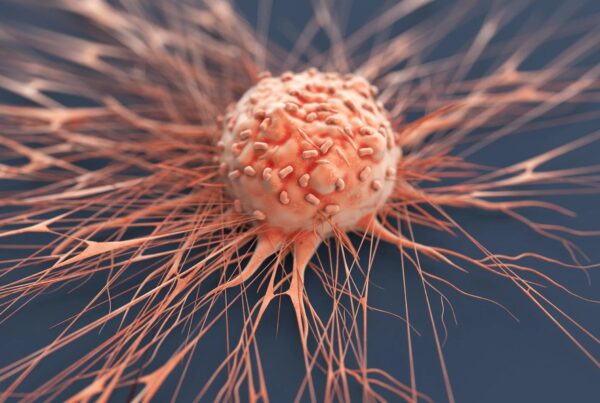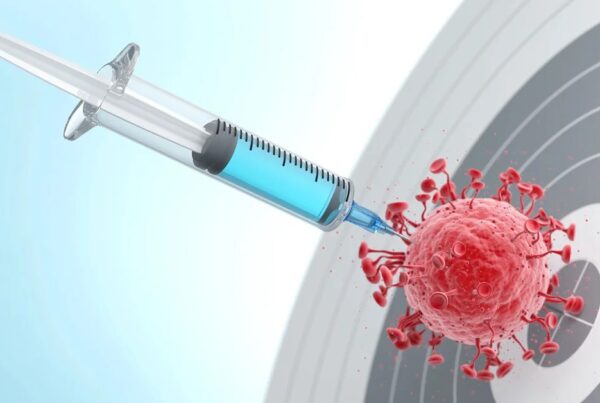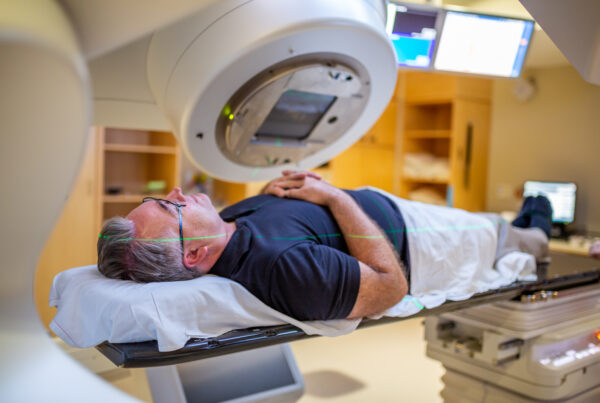If you are looking for a precise treatment option that doesn’t require surgical incision and significant risks, you should seriously consider Gamma Knife surgery or stereotactic radiosurgery (SRS).
In short, it is a non-invasive technique that uses highly focused high-energy gamma rays to reach specific brain tumors or malformations, without the need for physical removal.
Contrary to what the name suggests, Gamma Knife is not surgery in the traditional sense, which involves cutting or incision.
Instead, it is a highly advanced form of stereotactic radiosurgery (SRS) that uses highly concentrated and precise beams of gamma rays to target and destroy diseased cells or tumors with unprecedented accuracy, while preserving surrounding healthy tissue.
This procedure is performed using modern techniques based on 3D imaging and precise navigation systems, making it one of the best solutions for patients who cannot undergo traditional brain surgery.
Gamma Knife techniques are offered in advanced centers such as Liva Hospital in Turkey in a professional and safe manner.
At Liva Hospital in Turkey, patients receive a comprehensive evaluation by a team of experts to determine the suitability of Gamma Knife for their condition.
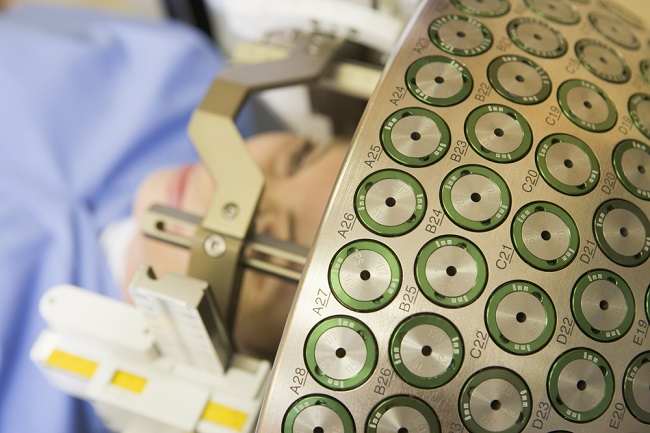
Principles of Gamma Knife Operation
To appreciate the effectiveness of the Gamma Knife, it’s important to understand the scientific principle upon which it operates.
Gamma Knife surgery relies on focusing hundreds of individual beams of gamma rays (a type of high-energy electromagnetic radiation) to a single focal point within the brain.
Each individual radiation beam is weak and insufficient to harm the healthy tissue it passes through.
However, when all these beams converge at a precisely defined three-dimensional point (the location of the targeted tumor or lesion), the radiation energy accumulates and becomes strong enough to destroy the abnormal or cancerous cells.
This technique offers several unique advantages:
- Exceptional Precision: Gamma Knife is one of the most accurate forms of radiation therapy available.
This precision allows for targeting small tumors, or tumors located in sensitive and critical areas of the brain (such as the brainstem or areas near the optic nerves), which may be difficult or dangerous to access with traditional surgery. - Non-Invasive Treatment: Since it does not require any surgical incisions, it significantly reduces the risks of infection, bleeding, and prolonged recovery associated with open surgery.
- High Dose in One or a Few Sessions: Unlike conventional radiation therapy, which is divided into small doses over several weeks, Gamma Knife often delivers the full therapeutic dose in a single session or a few sessions, reducing the number of hospital visits.
- Preservation of Healthy Tissue: Due to its extreme precision, the exposure of healthy brain tissue surrounding the tumor to radiation is significantly minimized, which reduces potential side effects and improves the patient’s quality of life after treatment.
Indications for Gamma Knife Use
The scope of Gamma Knife use has expanded to include a wide range of neurological conditions, thanks to its ability to precisely target lesions.
Gamma Knife is not limited to treating tumors only but also extends to certain functional brain disorders.
- Primary Benign and Malignant Brain Tumors:
- Meningiomas: Meningiomas, especially small, deep, or surgically unresectable ones, are among the prominent cases treated with Gamma Knife.Acoustic Neuromas / Vestibular Schwannomas: In this case, the Gamma Knife aims to control tumor growth and preserve hearing function as much as possible.Pituitary Adenomas: Used to treat tumors that were not completely surgically removed or have recurred.Some Low-Grade Gliomas: Especially small tumors that cannot be surgically removed.
- Skull Base Tumors: Tumors that are difficult to access surgically.
- Brain Metastases: Metastases (secondary tumors that have spread to the brain from cancer elsewhere in the body) are one of the most common indications for Gamma Knife.
This technique offers an effective option for controlling individual or multiple tumors (usually up to 10-15 in number) instead of whole-brain radiation therapy, which causes cognitive side effects. - Arteriovenous Malformations (AVMs): These are abnormal and tangled blood vessels in the brain, which can rupture and cause brain hemorrhage.
Gamma Knife is used in this case to slowly destroy these abnormal blood vessels over months or years, reducing the risk of bleeding. - Trigeminal Neuralgia: This is a condition that causes severe and chronic facial pain. Gamma Knife can target the trigeminal nerve to significantly reduce or relieve pain in many cases.
- Essential Tremor and Parkinson’s Disease: In some selected cases, Gamma Knife can be used to target specific areas in the brain to help control symptoms such as severe tremor, especially for patients who do not respond to medications.
What Happens During Gamma Knife Surgery?
Although it is called “surgery,” the Gamma Knife procedure does not involve any surgical incisions. The procedure is performed in a dedicated room containing the Gamma Knife unit.
- Accessing the Treatment Center: After the planning phase and stereotactic frame placement are complete, the patient is transferred to the treatment room where the Gamma Knife unit is located.
- Positioning in the Gamma Knife Unit: The patient is placed on a movable table that slides into the Gamma Knife unit.
The stereotactic head frame is attached to the device’s helmet, ensuring the patient’s head remains completely stable throughout the treatment. This step is crucial for maintaining extreme accuracy. - Radiation Delivery: Once the patient is precisely positioned, the medical staff leaves the room, and treatment begins.
The Gamma Knife unit delivers numerous beams of gamma rays from different angles, all converging precisely on the targeted tumor.
The patient feels nothing during radiation delivery, sees no flashes, and the device makes no loud noise. - Treatment Duration: The duration of treatment varies depending on the size of the tumor and the number of targets, but it usually ranges from a few minutes to several hours.
The medical team continuously monitors the patient from the control room via cameras and microphones. - Stereotactic Frame Removal: After treatment is complete, the patient is withdrawn from the device, and the stereotactic frame is removed from their head. The small pin sites on the scalp are usually cleaned.
- Post-Procedure Monitoring: The patient is transferred to the recovery area for observation for a few hours. They may experience some mild nausea or headache, which can be controlled with medication.
This entire process is highly precise and controlled, performed by specialized and highly trained medical teams.
At Liva Hospital in Turkey, every step of this process is carried out with the utmost care and precision to ensure the safety and effectiveness of the treatment.
Potential Risks and Complications of Gamma Knife Surgery
Although Gamma Knife is considered a very safe and effective procedure, like any medical intervention, it carries some potential risks and complications, although they are much less than those of open surgery.
It is important for patients to be aware of these risks and discuss them with their medical team.
- Short-Term Side Effects (usually temporary):
- Headache: Headache is very common in the first few days after the stereotactic frame removal and can be controlled with pain relievers.
- Nausea and Vomiting: May occur due to anesthesia or a reaction to radiation, but they usually subside quickly.
- Fatigue: Feeling tired or fatigued is common for several days after the procedure.
- Redness or Pain at the Frame Pin Sites: These points can be painful or sensitive to touch for a few days.
- Long-Term Side Effects (less common but potentially more serious):
- Brain Swelling (Edema): Swelling may occur around the treated tumor, especially after several weeks or months.
This swelling can cause a temporary increase in neurological symptoms (such as headache, weakness, or seizures). It is usually treated with steroids. - Radiation Damage to Healthy Tissue: Despite high precision, there is a very small risk of damage to healthy brain tissue surrounding the tumor.
This can lead to permanent neurological side effects such as weakness, numbness, vision or hearing problems, or cognitive difficulties, especially if the tumor is very close to vital sensitive structures. - Seizures: Seizures may occur, especially if the tumor or treatment area is located near seizure-causing regions in the brain.
- Treatment Failure: In some cases, the tumor may not respond to treatment or may continue to grow, requiring additional treatments.
- Hemorrhage (rarely): In cases of arteriovenous malformations, the vascular anomaly may not close immediately after treatment, and there remains a risk of bleeding until complete occlusion.
- Brain Swelling (Edema): Swelling may occur around the treated tumor, especially after several weeks or months.
The selection of suitable patients and meticulous treatment planning by a multidisciplinary specialized team are vital to minimize these risks.
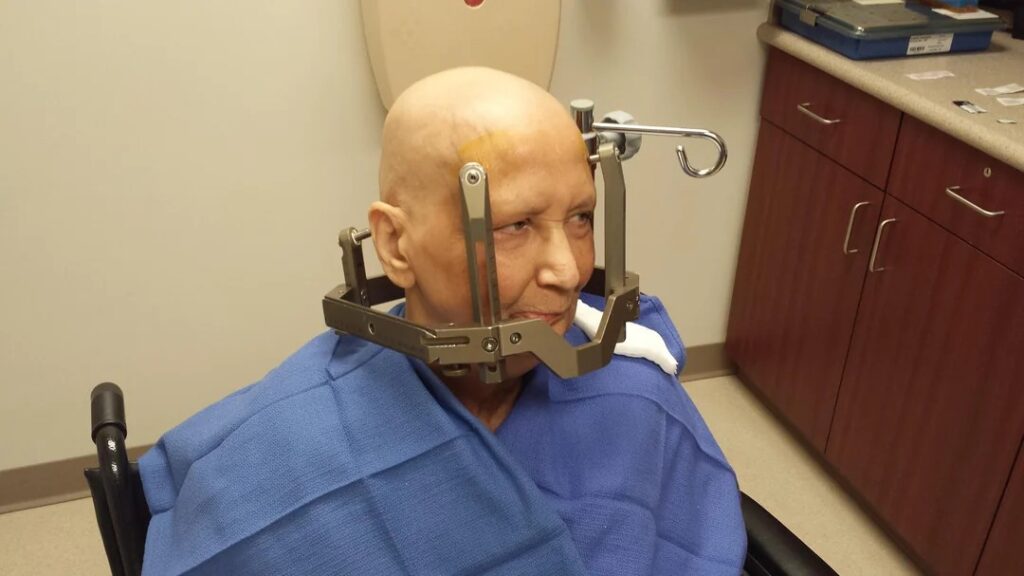
Outcomes and Prognosis After Gamma Knife Surgery
Gamma Knife surgery offers excellent results in many cases, especially for carefully selected patients. Outcomes are assessed based on multiple factors, not just tumor disappearance.
- Tumor Control: The primary goal of Gamma Knife is to control tumor growth. In most cases,
Gamma Knife achieves high rates of tumor control (growth stabilization or shrinkage) exceeding 80-90% depending on the tumor type. The tumor may not completely disappear, but cessation of its growth or reduction in its size is considered a success. - Symptom Improvement: Improvement in tumor-related symptoms usually begins gradually weeks or months after treatment, as the tumor responds to radiation.
- Preservation of Neurological Function: Gamma Knife is highly effective in preserving neurological functions compared to open surgery, due to its extreme precision in targeting the tumor and avoiding healthy tissue.
This significantly contributes to improving the patient’s quality of life. - Success Rates for Certain Conditions:
- Brain Metastases: Gamma Knife achieves high local control rates (80-95%) for single or multiple metastases.
- Meningiomas and Acoustic Neuromas: Show excellent long-term control rates.
- Arteriovenous Malformations: Achieve occlusion rates ranging from 70-90% over 2-3 years after treatment.
- Trigeminal Neuralgia: Provides pain relief in 70-80% of patients.
- Long-Term Follow-up: Regular follow-up with MRI scans is essential to assess tumor response to treatment and detect any changes. It may take several months to see complete tumor shrinkage.
Conclusion
Although it does not involve a surgical incision in the traditional sense, its extreme precision in directing radiation beams makes it an unparalleled “knife” for targeting diseased cells, while preserving surrounding healthy tissue.
From primary brain tumors and metastases to vascular malformations and neuropathic pain, Gamma Knife offers new hope for patients, especially those who are not candidates for traditional surgery.
Careful preparation, meticulous planning, and comprehensive post-treatment care are all essential elements to ensure the best outcomes.
Liva Hospital in Turkey offers modern Gamma Knife techniques within a specialized environment that includes multidisciplinary teams.
The team uses advanced planning software and meticulous follow-up throughout the treatment.
Precise dose distribution is also available depending on the type and location of the tumor, which increases success rates and reduces risks.
Frequently Asked Questions
Is Gamma Knife traditional surgery?
No, despite its name, Gamma Knife is not surgery involving incisions or cutting. It is a form of stereotactic radiosurgery that uses concentrated beams of radiation to precisely target diseased cells without the need for opening the skull.
Do I feel anything during Gamma Knife treatment?
No, you will not feel anything during radiation delivery. There is no pain or direct sensation of radiation. You may hear a faint sound from the machine, but you will not feel anything unusual. Most patients describe the procedure as completely painless.
How long does recovery take after Gamma Knife?
Recovery after Gamma Knife is very quick compared to traditional surgery. Most patients can return home the same day or the morning after the procedure.
Does Gamma Knife cause hair loss?
Typically, Gamma Knife does not cause hair loss. Because the radiation is precisely focused on the tumor, the radiation beams pass through the scalp at very low doses that do not cause hair loss in most cases.
Is Gamma Knife a curative treatment for all tumors?
For some benign tumors or arteriovenous malformations, Gamma Knife can be a curative treatment. However, for malignant tumors or metastases, the Gamma Knife is usually part of a comprehensive treatment plan.
Can I drive after Gamma Knife?
It depends on your individual condition and any neurological symptoms you may have. If you take mild sedatives during the procedure, you will not be able to drive on the same day and someone else should drive you home.

